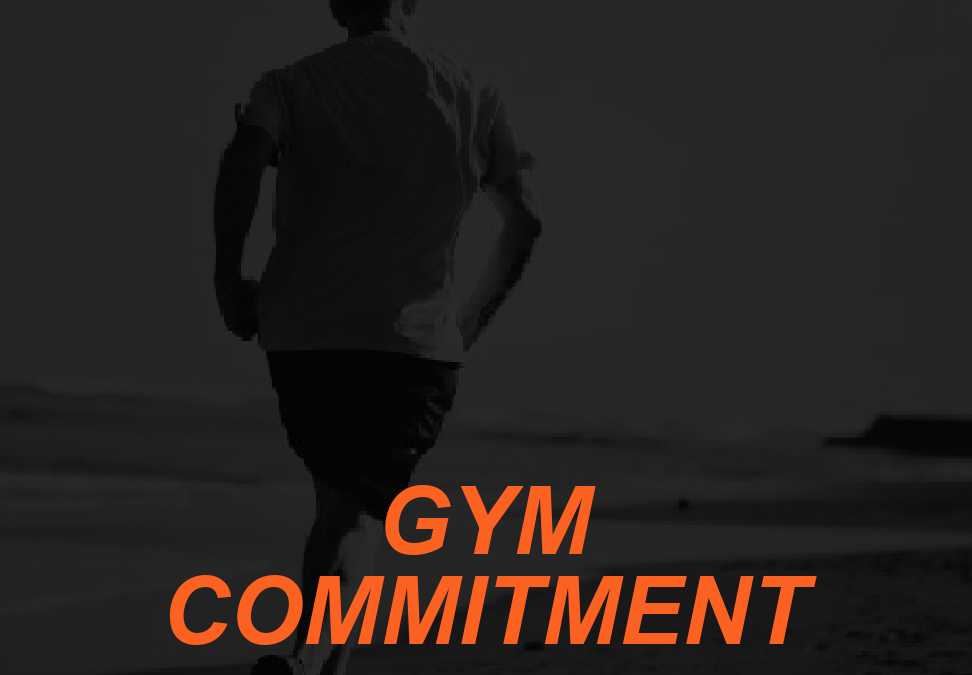Whenever we are approached by a new client, the level of motivation they have for committing to exercise is likely quite high–at that moment. But, as many trainers will discover, motivation and interest in fitness clients’ goals are likely to wax and wane, depending on life situations, seasons, outside circumstances, etc. What can personal trainers do to both accurately judge gym commitment and help keep motivation high?
Projecting Future Gym Commitment and Planning
Any conversation about planning future actions and outcomes is essentially a conversation about self-control. Designing an 8-week exercise program for our personal training client has to presume, at least in part, that the client will repeat certain behaviors for at least 8 weeks.
Temporal Discounting, or Hyberbolic Discounting, refers to an individual’s tendency to not only consider the amounts or relative value of a reward, but also its immediacy (Critchfield, 2001). As an example, when an individual is asked whether they want $10 now, or $12 in 30 days they may choose the $10 now. But if they are asked instead if they want $10 in 100 days, or $12 in 130 days, they may choose the $12 option.
Standard economic theory would suggest that the subject would choose the same in both cases, especially since the stakes are exactly the same difference in both cases. It turns out, humans have a hard time predicting exactly what their motivations and drivers will be in the future.
Popular goal-setting research suggests that planning, as well as planning for adjustments and potential failures, only helps to improve consistency, process adherence, and outcomes. In other words, if missteps and adjustments are part of the plan, an individual will be more likely to assess their experiences as successful and positive.
What Was Tested?
Research by Acland and Levy (2015) set out to test not only how certain incentives affected habit formation in the gym, but also to test how naive individuals may be in predicting their ability to commit and follow through with exercise behaviors in the future.
All the subjects in this study were asked initially to predict how many weekly visits to their student recreation center they would make after the test period, or “intervention”. Those subjects were split into a test group, who received outcome-dependent incentive coupons that were meant to motivate better turnout at the gym. The control group was not incentivized beyond the initial moderate compensation promised for participation. After 4 weeks the subjects were asked to “re-predict” their post-intervention attendance.
Outcome
The good news about the outcome of the Acland and Levy paper is that extrinsic motivators, the incentive coupons in this case, did not “crowd-out” intrinsic motivation after the intervention. Classically held beliefs and previous literature would suggest that external rewards, like cash for instance, reduce an individual’s internal motivation to do a certain behavior or task in the future. There is research that clearly suggests both outcomes so it still seems to be highly debatable and subjective to certain situations.
However, in this study, the test group outperformed the control group in gym visits post-intervention by a statistically significant amount. It is important to note that after the school’s winter break attendance regressed back to pre-treatment status for all groups, suggesting that various temporal landmarks can create shifts in mindset, habits, and objectives, but that is for a different article altogether.
Acland and Levy also found, somewhat expectedly, that people are not that great at predicting their future selve’s commitment and effort. All groups mis-predicted their future gym attendance by up to 2 visits per week. Furthermore, as expected, subjects adjusted their predictions during their later “prediction periods” confirming that our “future selves” become more salient as we get temporally closer. Today’s self can be slightly different from tomorrow’s self, but very different from next month’s self.
Motivating Fitness Clients to Increase Gym Commitment
What does this mean for fitness professionals and individuals who want to improve various fitness habits? We should take care with the incentives we use, but not be afraid to employ them regularly. Employee wellness programs can implement various attendance challenges with prizes. Or personal trainers can set plentiful goals with their clients and apply prizes for reaching them like a free resistance tube after they hit 20 sessions.
Planning and proper goal-setting techniques are of great importance. The authors of the study also suggest that individuals can often underestimate the rate at which habits “decay”, giving importance to regular upkeep, assessment, and incentives. As much as we like to teach grit, persistence, and consistency, we can leverage goal-setting and incentives to help combat the very human tendency to over-predict our future effort and keep motivation and gym commitment high.
References
Dan Acland, Matthew R. Levy (2015) Naiveté, Projection Bias, and Habit Formation in Gym Attendance. Management Science 61(1):146-160. https://doi.org/10.1287/mnsc.2014.2091
T.S. Critchfield, C S.H.ollins, Temporal discounting: basic research and the analysis of socially important behavior J Appl Behav Anal. 2001 Spring; 34(1): 101–122. https://doi: 10.1901/jaba.2001.34-101
Andrew Gavigan is a recognized speaker in the fitness industry, master trainer, Creator of the mostFit Core Hammer, and serves as Director of Education for Aktiv Solutions. He is a NASM and NFPT Certified Personal Trainer and Behavioral Change Specialist and has developed comprehensive fitness and exercise programs for health club & workplace wellness facilities. Andrew’s passion centers around user engagement and human behavior.


